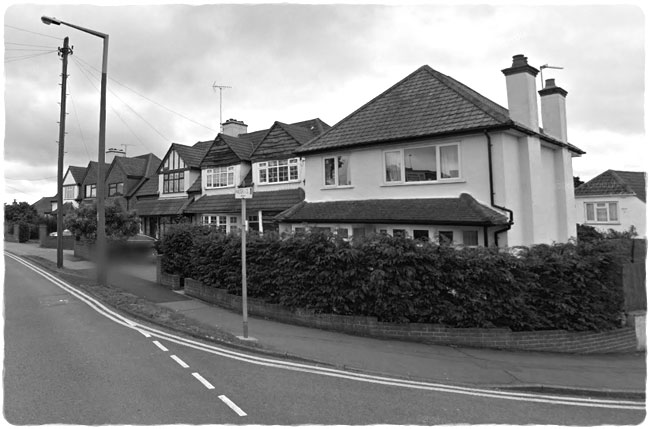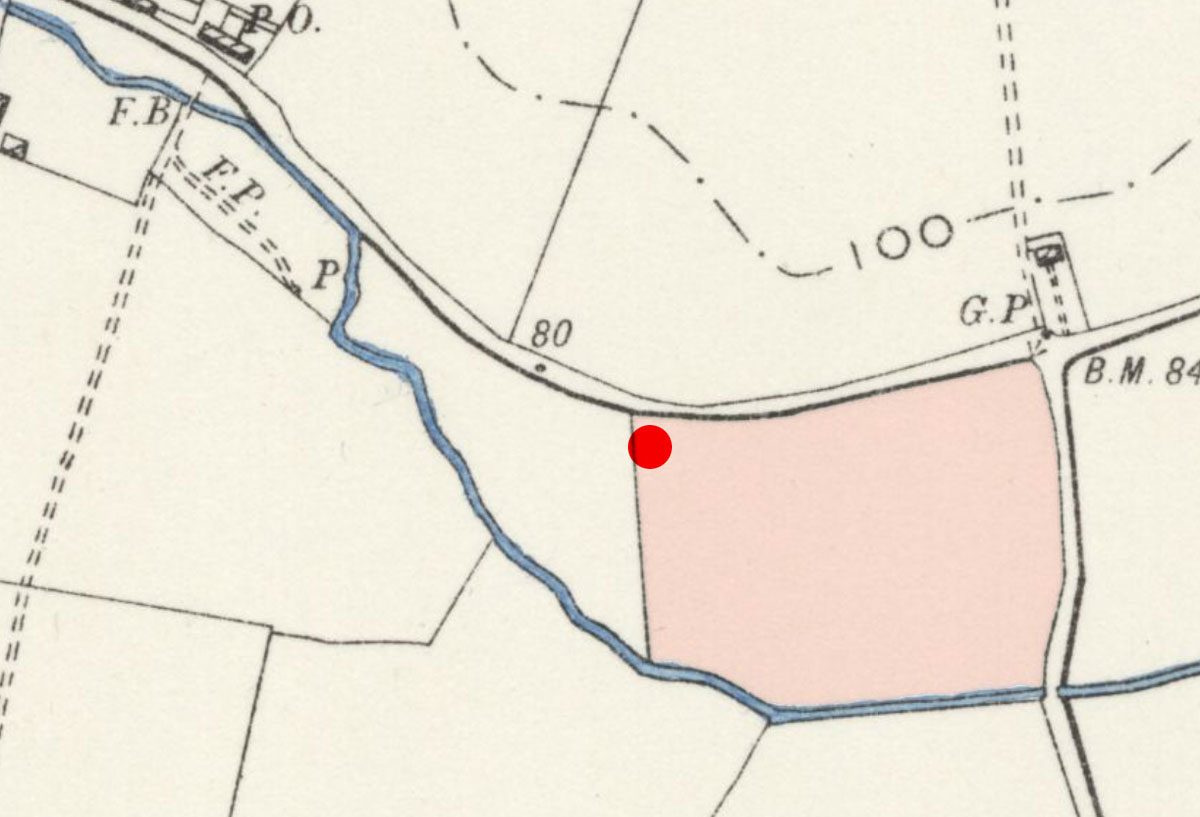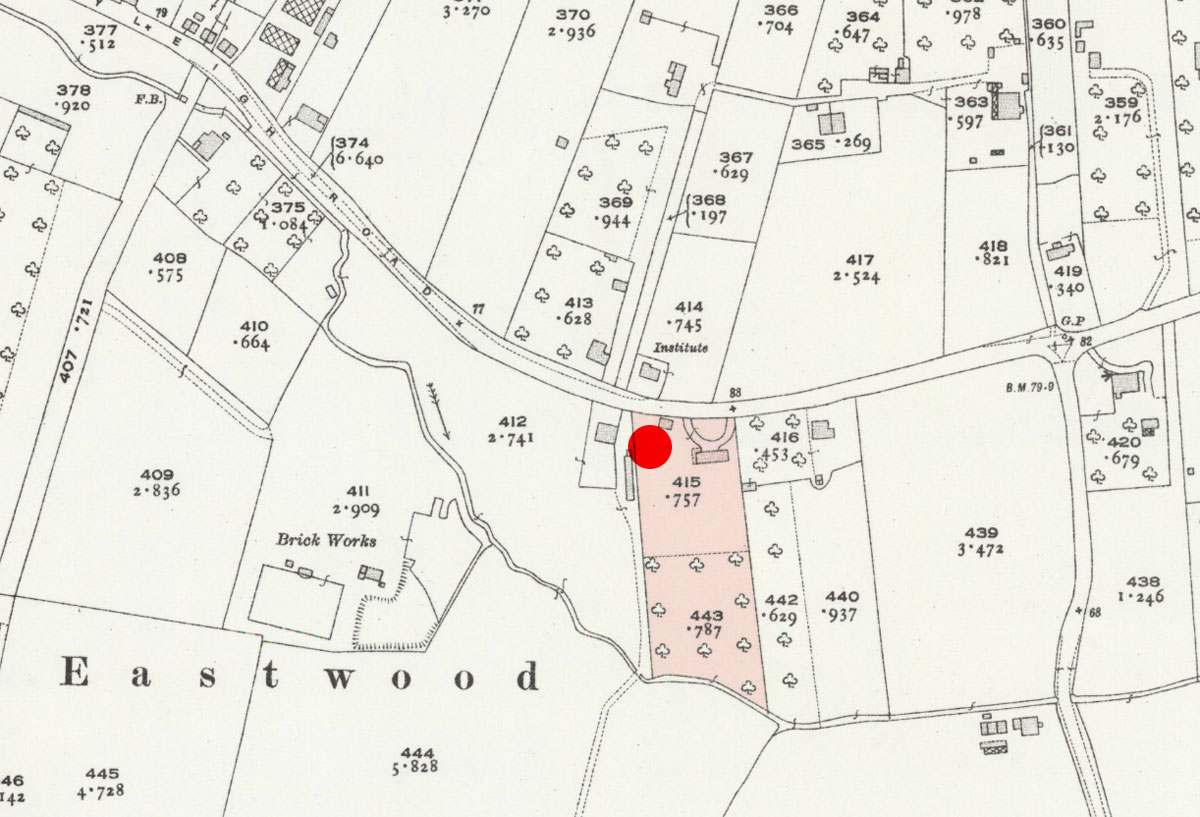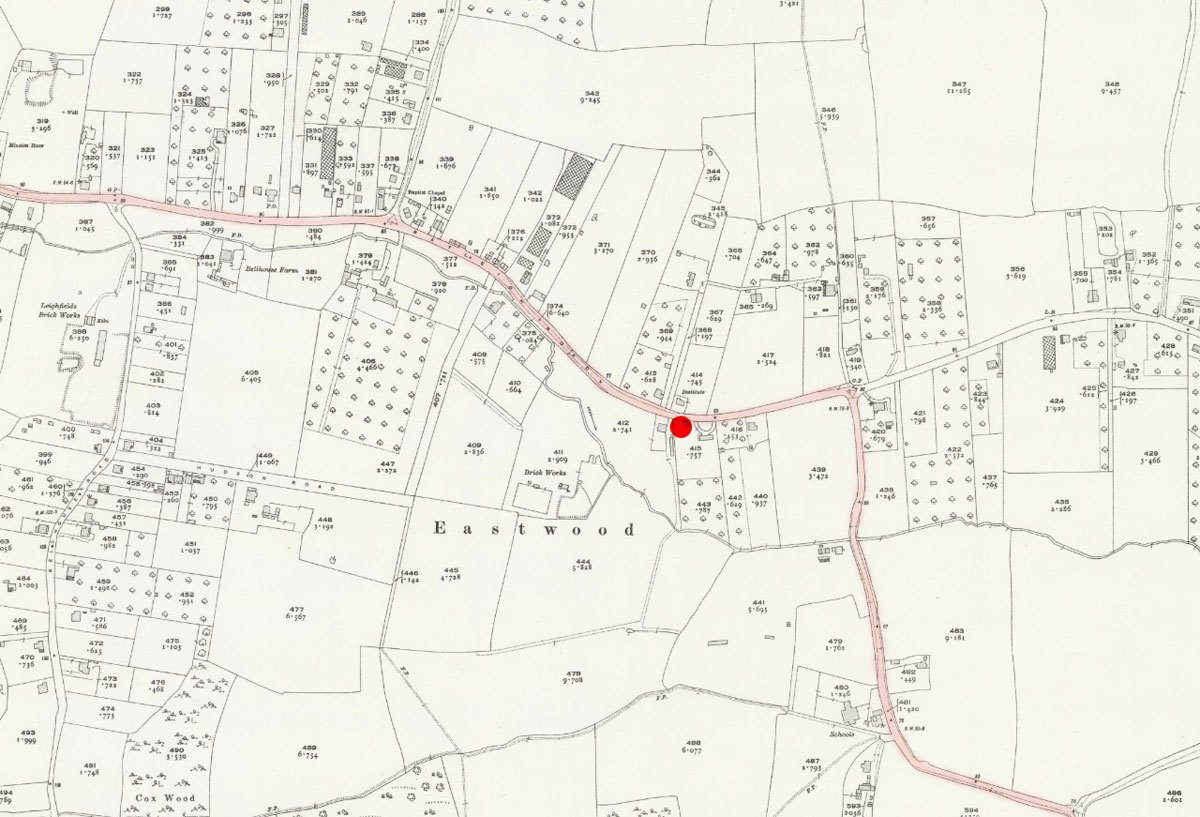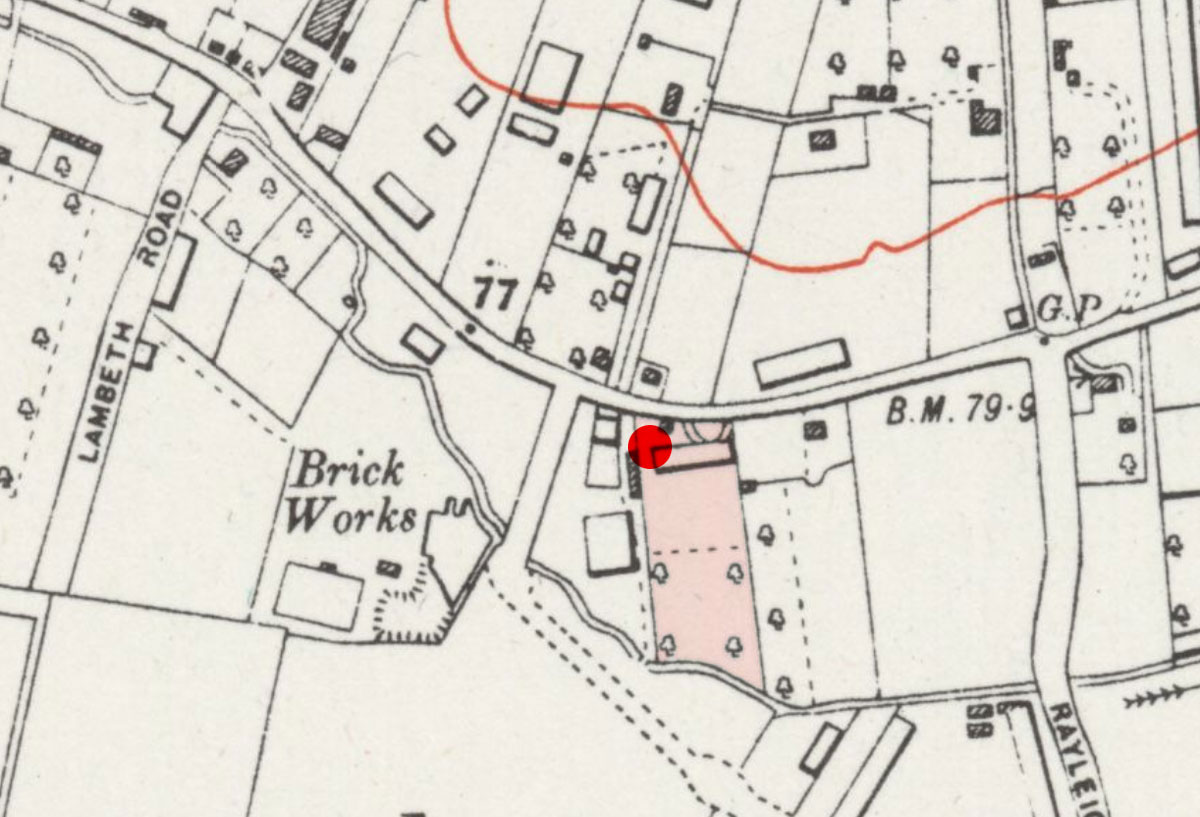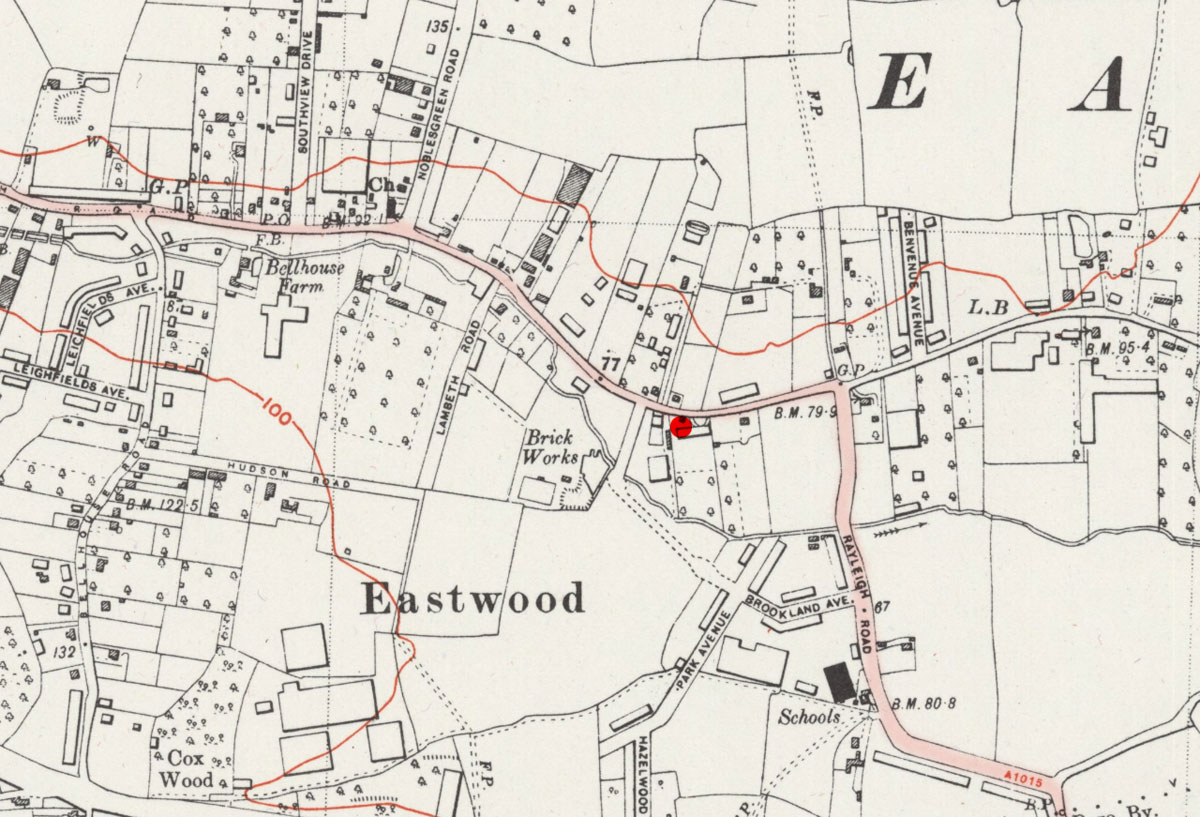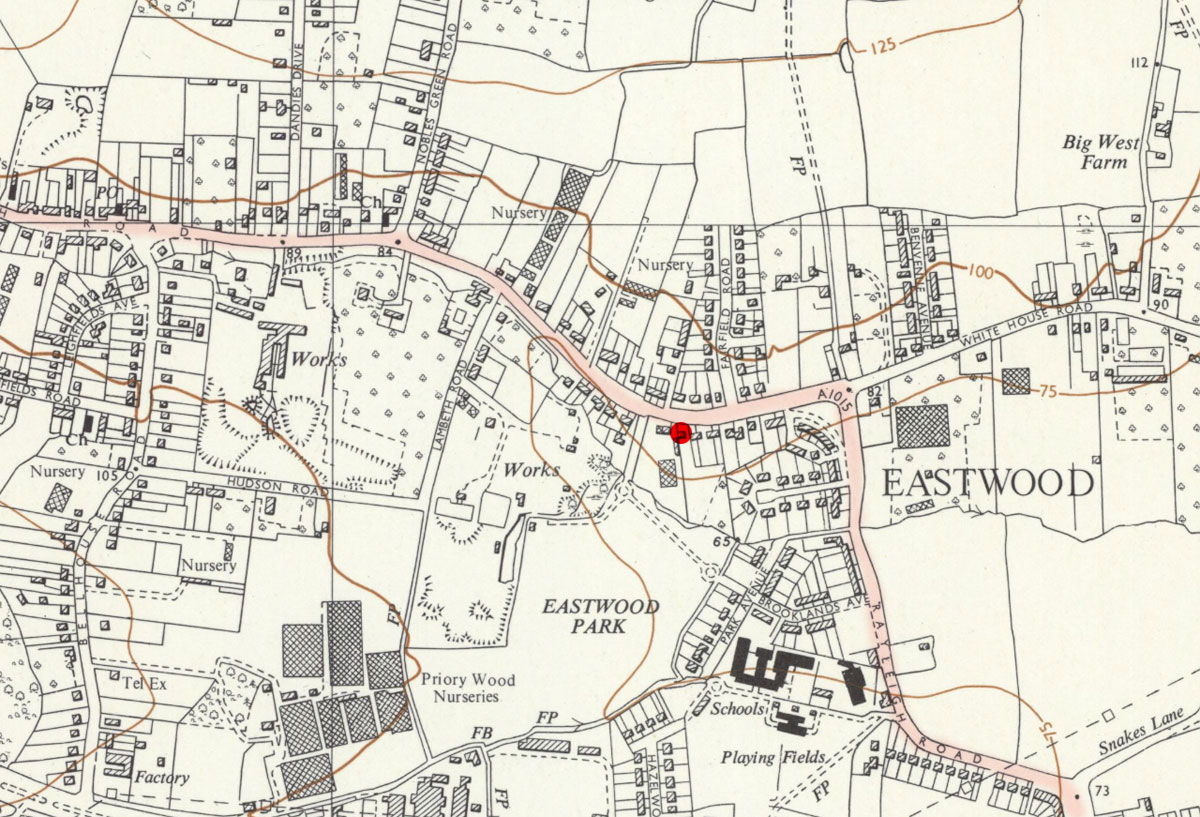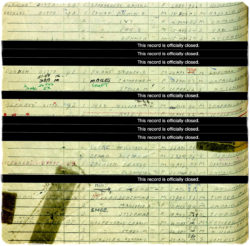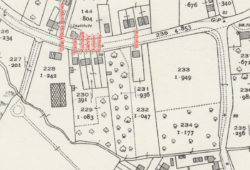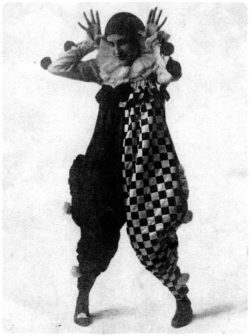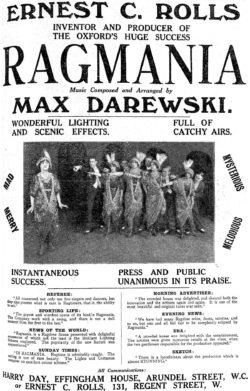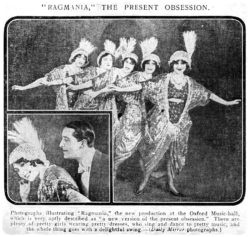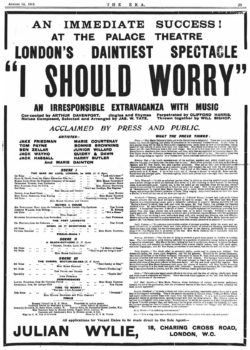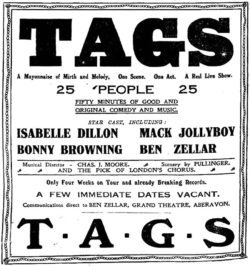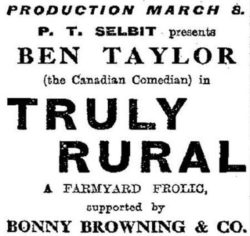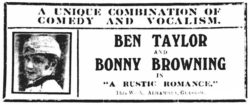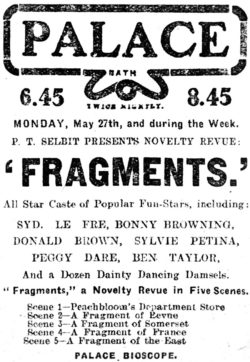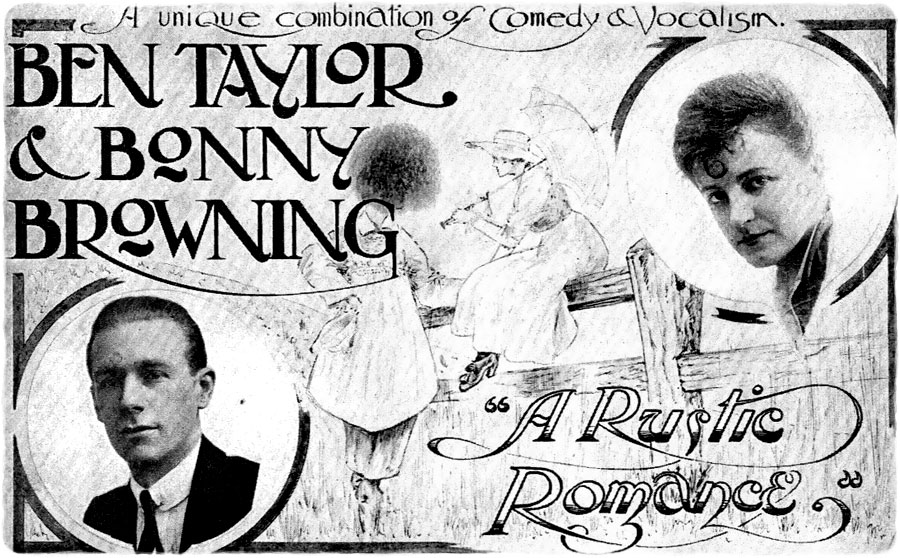After a conversation with a friend about his parents new house situated on the Rayleigh Road in Eastwood, Essex I decided to look into its history. It is oddly positioned next to a pair of semi-detached houses, an old well was found in the garden and there are hints of it being part of a bigger piece of land at one time. What could I find out?
- #185 Rayleigh Road, Eastwood (on right)
1840 TITHE RECORDS
The field where no.185 is now built was once owned by “Thomas Brewitt Committee for the estate of James MEAKINS” and in the occupation of William Weld WREN in 1840.
Much of Eastwood remained fields for quite some time, so I have been able to mark the fields William WREN occupied in on the map on the 1880 map below (right), along with some of his own land which extended further off to the east (he rented and owned a good number of acres). William Weld WREN’s own land was known as the “Eastwoodbury Estate”.
Maps reproduced with the permission of the National Library of Scotland.
- Rayleigh Road, Eastwood 1880 (Detail)
- Rayleigh Road, Eastwood 1880
WILLIAM MEAKINS
William MEAKINS was born 1773 in Hornchurch, where he worked as a farmer, and died there in 1839 after which his estate began to be sold off. I imagine the land in Eastwood was sold at some point after the 1840 tithe was taken but there is no information on this.
WILLIAM WELD WREN
William Weld WREN was born 1776 in Southchurch, Essex. He married Mary VASSALL 1st May 1798 in Eastwood and they lived at “Eastwoodbury” in Eastwood where they had ten children and he farmed the land. Mary died in 1830 and William in 1849. William got a mentioned in the description for Eastwood in the local directory.
- 1848 Directory
LAND REGISTRY
There is sadly now only one piece of historical information remaining within the legal documents for the land and house of 185 Rayleigh Road in Eastwood, and that is for a conveyance between Thomas Kenneth MACKENZIE and John STOKES dated 12th May 1896.
- To erect and for ever maintain a good post rail or other sufficient fence on the East side of the land or plant and cultivate a quickset hedge.
- The land shall be cultivated or kept free of thistles and noxious weeds.
- No manufactory or slaughter house shall be erected on the land and no brickmaking or offensive trade or occupation be carried on.
- No caravan or moveable dwelling circus show fair roundabout or other public entertainment amusement or exhibition shall be allowed upon the land.
- Every dwellinghouse erected upon the land exclusive of stabling and other outbuildings shall be of the value at builders prices prime cost of not less than £150.
- Every dwellinghouse shall be built facing the nearest road and a house or building appurtenant thereto shall not be placed nearer to a roadway than 30 feet.
- No building shall be used for a tavern beershop public house or hotel and no house shall be used for a shop unless by consent of the Vendor and for a trade approved by him.
- The Purchaser shall not stop up divert or interfere with any watercourse or right of way.
This map detail from 1898 shows the full plot of land and where no.185 would be built eventually, showing no properties had yet been erected.
- Rayleigh Road, Eastwood 1898 (Detail)
- Rayleigh Road, Eastwood 1898
THOMAS KENNETH MACKENZIE
Thomas Kenneth MACKENZIE was born 1847 in Bethnal Green, London and worked as a farmer then builder. He married Agnes Maria DUPREE in 1869 and they had two children together (also named Agnes & Thomas).
In 1881 Thomas was a farmer of 9 acres at Hurstwood Red Tile Farm in Buxted, Sussex with Agnes and children. By 1891 Thomas and Agnes were living at Wayburn Farm in Thundersley, Essex. On 30th Apr of that same year, Thomas bought Thundersley Lodge Farm, which contained about 300 acres of land.
On 12th May 1896 it appears Thomas sold an 8 acre plot of land in Eastwood to John STOKES which would later contain no.185 Rayleigh Road (amongst others). There is no way to know exactly how much land Thomas owned in Eastwood, or how much he sold to John.
Three years later Thomas submitted plans to build Marine Lodge on the corner of Palmerston Road/The Leas at Westcliff-On-Sea in. A plaque with “T K M 1899” can still be seen on the building today. Thomas and Agnes were living there in 1901, and his occupation was now given as a “builder by contract” (age 54). The couple had moved again by 1911 to Highgate, London where he died 7th Mar 1916 aged 70. Agnes died there in 1919 aged 73.
JOHN STOKES
John STOKES was born 1853 in Islington, London and worked as a carpenter. He married Annie SACRE in 1879 and they had five children together. The family lived in Highbury, London until just after 1891 when they moved to Eastwood, Essex. John looks to have moved there first as the rest of the family were still living in Highbury when the census was taken.
By 1901 the family were living at Myrtle Villa, Rayleigh Road in Eastwood, where John was still working as a carpenter and joiner, and the same in 1911. John died 10th Sep 1929 in Eastwood aged 76, and Annie died 1934 aged 82.
MAPS
Map Published 1922
There had been lots of development along Rayleigh Road by 1922. The large property in plot #415 below looks to have had a double driveway, but I’ve not been able to positively identify it. It wasn’t there when the 1911 census was taken and I don’t think the properties either side were there yet either.
John STOKES was still alive and living in Eastwood at this time (age 69), so perhaps he had sold of plots of his land for development.
- Rayleigh Road, Eastwood 1922 (Detail)
- Rayleigh Road, Eastwood 1922
Map Published c.1925
This map shows the next few changes. There was now a proper pathway leading into Eastwood Park and the building with the double driveway had been extended. The dates given for this map seem to be incorrect (revised 1938 and published c.1947), as the map following this one is totally different but supposedly covers the same time period. I think this is mid 1920’s due to other evidence I have found regarding the replacement properties soon to be built.
- Rayleigh Road, Eastwood c.1925 (Detail)
- Rayleigh Road, Eastwood c.1925
Map Published 1943
The plot of land (formerly plot #415) had been divided up, buildings demolished and new ones build. No.185 was now part of plot #229 which included the land below as well as the section with trees on (#230 is the plot with the pair of semi detached and the numbers below are acreage). The two smaller buildings in plot #229 are most likely out-houses of some kind.
- Rayleigh Road, Eastwood 1943 (Detail)
- Rayleigh Road, Eastwood 1943
Map Published 1960
The curved parade of shops had now been built on the corner along with new houses in between, and Willow Close just underneath. The nursery to the west was still there.
- Rayleigh Road, Eastwood 1960 (Detail)
- Rayleigh Road, Eastwood 1960
Map Published 1967
Walters Close had now been built, cutting around no.185 thus placing it on the corner and loosing all extra land beyond the garden. The land to the west, including the former Brick Works, had been fully developed by this time.
- Rayleigh Road, Eastwood 1967 (Detail)
- Rayleigh Road, Eastwood 1967
Current Map
How the area looks today.
- Rayleigh Road, Eastwood
1939 REGISTER, ELECTORAL & PLANNING RECORDS
Armed with details of the property from the maps, I began checking other sources for more information on this section of road. The former property built on plot #415 (map 1922) was not built when the 1911 census was taken (nor the property just to the left), but I knew the property I was researching was built when the 1939 Register was take, so I took a look for it. I discovered that the new line of houses at the very south of Rayleigh Road were all numbered, then recorded by name, then numbered again and then again by name. By following along the route taken by the enumerator on the 1943 map, I was able to work out which property no.185 was at the time.
In 1939, no.185 was called “BRENEN“, and occupied by Benjamin SELLAR, his wife Marjorie A SELLAR, and their daughter Josephine SELLAR (the surname “SMEE” was added to Josephine at a later date as the registers were continually updated to include married names). The cross-hatched buildings in plot #228 below were glass-roofed, and part of Goal House Nurseries next door. The pair of semi-detached properties next to no.185 on the right were originally called “Rochdale“, “Glenroy“, “Dunoon” and “Rothsay” (now numbers 183, 181, 179 & 177).
- 1939 Register
- Houses as named in 1939
- 177, 179, 181, 183 & 185 Rayleigh Road, Eastwood
I then looked to see if I could find “Brenan” in any other records, and discovered that the SELLAR family were living there ten years prior in 1929, but not in 1928 (from electoral records, which go up to 1931 online). I also checked the four semi’s. All were recorded in 1929 and it’s likely the two I haven’t found in 1928 were simply unoccupied at the time the electoral roll was taken. Could all five properties have been built around 1927?
Brenan (no.185)
Rochdale (no.183)
Glenroy (no.181)
|
Dunoon (no.179)
Rothsay (no.177)
|
There is a place called Brenen in County Waterford, Ireland. Dunoon and Rothesay close by each other in Scotland, and Glen Roy is also in Scotland. Rochdale is in Greater Manchester.
I checked the Essex Archive website for any mention of “Sellar” and “Eastwood” and discovered something very interesting filed in the Planning Applications section (index only, the original files are not online).
- 1927 – “Five houses in Rayleigh Road. Owner: B. Sellar, Victoria Avenue, Southend-on-sea. Architect: Charles Cooke, 2 Avenue Road Westcliff.”
- 1927 – “Partial rebuilding of bungalow called Penpraze, Rayleigh Road, damaged by fire. Owner: Benjamin Sellar, 204 Victoria Road, Southend-on-sea. Architect: Charles Cooke, 2 Avenue Road, Westcliff-on-sea.”
- 1927 – “House in Rayleigh Road. Owner and builder: B. Sellar, 204 Victoria Avenue, Southend-on-sea. Architect: Charles Cooke, 2 Avenue Road, Westcliff.”
Benjamin was a timber merchant, as were two of his brothers and father. When I checked the archive again for just mention of “Sellar”, his fathers name pops up multiple times and seems he built quite a few houses in Southend between 1900-1922. It looks like Benjamin SELLAR built properties 177, 179, 181, 183 & 185 Rayleigh Road (plus another house) in 1927, and lived in one of them himself for several years. I originally thought that no.185 was built before the semi’s, but this doesn’t seem to be the case. The property named “Penpraze” was built in 1913 by the excellently named Harry U’REN. He lived there between 1914-1917, followed by the MADGWICK family 1918-1922 and finally the ANDREWS family between 1923-27. The property then disappears. Perhaps it was renamed, or even demolished rather than rebuilt? Could Penpraze even have been the original property on plot #415?
My next step was to look into the life of Benjamin Josiah SELLER, and via a family tree on Ancestry, discovered he was once a travelling music hall entertainer!
BENJAMIN JOSIAH SELLAR
Benjamin Josiah SELLAR was born 17th Dec 1883 in Hackeny, London. He was the fifth of eight children born to Josiah SELLAR and Hannah STILWELL, who married in 1875 (also in Hackney). Josiah started his career as a commercial clerk then bank manager, but by 1901 he was a timber merchant and living in Prittlewell, Essex. Benjamin was age 17 at this time and working as a joiner.
In Oct 1906, Benjamin and his brother Horace travelled over to Los Angeles, USA. Horace had returned by the 1911 census, but Benjamin remained, and travelled to Canada. On his return in 1912 age 28 he gave his occupation as “actor”, and the next year married an American actress named Bonnylyn LOCKHARDT. Benjamin and Bonnylyn performed together and were known as “The Transatlantic Comedy Couple“. She went by the stage name “Bonny Browning“, and Benjamin was “Ben Zellar” changing it to “Ben Taylor” in 1914. They toured extensively up and down the country throughout 1913-1918, then in Sep 1918 when they were performing “Fragments” in Dundee, Bonny became ill with appendicitis and died in hospital after an unsuccessful operation at age 30.
Ben and Bonny performed in at least six major shows together. They had an abundance of praising reviews, so look to have been a very popular couple.
- 1913 ~ “Ragmania” (as Ben Zellar)
- 1913-1914 ~ “I Should Worry“
- 1914 ~ “Tags“
- 1914-1915 ~ “Truly Rural” (from now on known as “Ben Taylor”)
- 1915-1916 ~ “This Is The Life“
- 1916-1917 ~ “A Rustic Romance“
- 1918 ~ “Fragments“
These three wonderful photos (which I’ve edited slightly) are thanks to Ancestry member “dallen1951“, great grandson of Josiah SELLAR.
- “Ben Zellar”
- “Ben Zellar & Bonny Browning”
- “Bonny Browning”
Benjamin continued his career and remarried in 1921 to Ada Marjorie ROBINSON, who was ten years his junior. Ada was born and bred in Hull, so I wonder how they met? They had one daughter together, Josephine, born in London shortly after they married.
Benjamin as “Ben Taylor” carried on performing, writing and producing until the end of 1926, creating many more entertaining shows which were performed all around the country:
- “Oh! La! La!
- “Happy Days”
- “Bran Pie”
- “The Prairie Girl”
- “The Wits”
- “Whispers”
- “Rodeo”
- “Playtime”
- “My Erb”
- “Wildfire”
Benjamin looks to have retired from show business at the end of 1926 and picked up his family career as a timber merchant. He built six houses in Eastwood in 1927, and the family lived at “Brenon” from 1929 until at least 1939.
Benjamin died 6th Oct 1947 at 2 Grosvenor Place, Victoria Avenue, Southend aged 63. Ada moved back up north and died 26th Jun 1986 at Grimsby, Lincolnshire aged 90. She never remarried. Their daughter Josephine married Leonard Barton SMEE in 1943 and they had one child together. Tragically, their son died shortly after the birth of his own child at age 33.
Newspaper article reproduced with the permission of the British Newspaper Archive and The British Library Board
- “Ragmania” (The Stage – Thursday 27 February 1913)
- “Ragmania” (Daily Mirror – Friday 21 February 1913)
- “I Should Worry” (The Era – Wednesday 13 August 1913)
- “Tags” (The Stage – Thursday 03 December 1914)
- “Truly Rural” (The Stage – Thursday 25 February 1915)
- “This Is The Life” (The Stage – Thursday 01 July 1915)
- “A Rustic Romance” (The Era – Wednesday 28 June 1916)
- “A Rustic Romance” (The Era – Wednesday 10 October 1917)
- “Fragments” (Bath Chronicle and Weekly Gazette – Saturday 25 May 1918)
- “A Rustic Romance”

